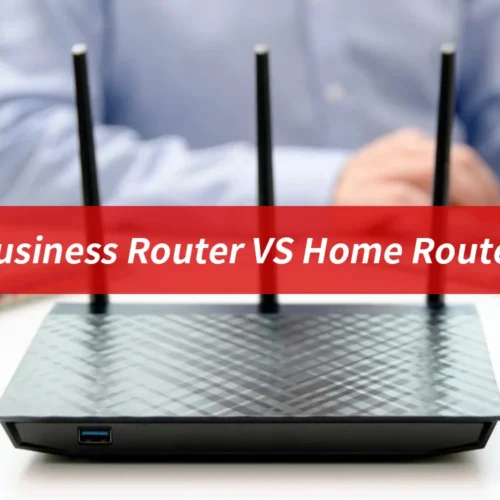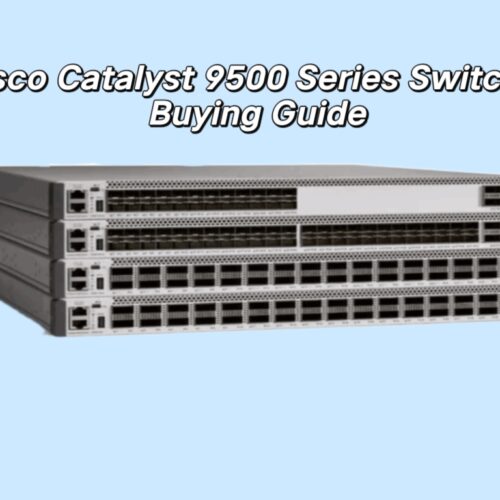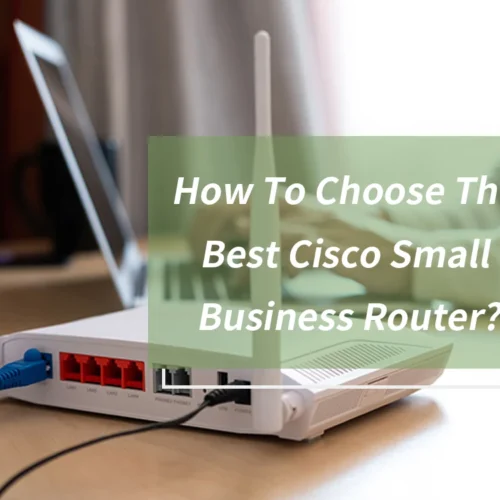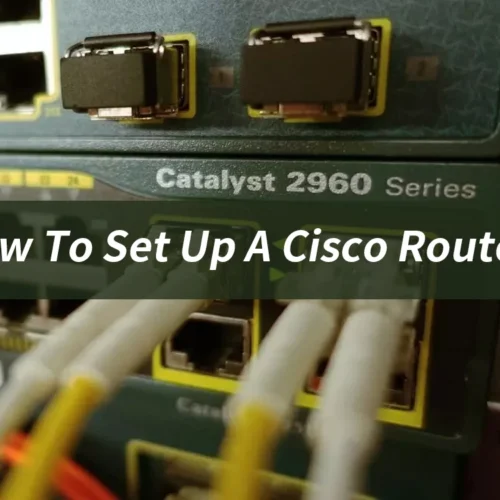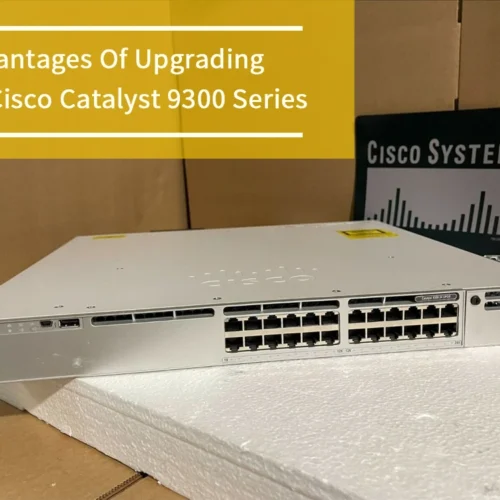Introduction:
Your router is connected to every wireless device in your house. It takes just an hour without Wi-Fi for you to feel anxious about being disconnected. Indeed, routers have become an indispensable part of people’s lives. Routers can connect to different network structures. It has two main functions. It manages network traffic by forwarding data to their intended IP addresses. Multiple devices can use the same Internet connection. Cisco routing offers intent-based networking across the WAN, cloud, and LAN. Cisco routers can connect to different network structures and provide advanced analytics, automation, provisioning, and security, ensuring a reliable solution. If you’ve chosen Cisco routers carefully, setting up the Cisco router is the next important step. So how to set up a Cisco router? Each router is unique, so that the setup process will vary from one router to another. These are the basic steps for all router setups.
What should you do before setting up a Cisco router?
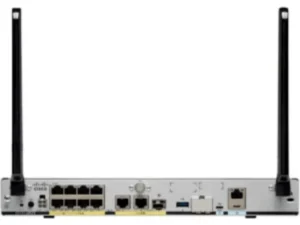
Check the Internet connection
A poor internet connection can make router setup difficult. Connecting a computer to an Internet service provider’s gateway device or modem is the easiest way to do it. Once your computer recognizes an Internet connection, it is ready to set up your Cisco router. It’s also essential to have an active internet connection if you are installing your Cisco home router in a new apartment or home. You can check your internet connection status by connecting to your modem/ISP gateway with an Ethernet cable and plugging it into your computer. You can set up the Cisco router if your computer has an internet connection.
Watch out for stickers or notes with important information
This may seem like an effortless step, but it is easily overlooked. When you take note of it, it will save you a lot of trouble. Look out for sticky notes or slips of paper with important information, such as the Cisco router’s default username and password.
Look for an app
Many router manufacturers offer mobile apps that can be used to manage the setup and maintenance of their routers. You don’t need to connect your Cisco router to a computer in order to use a smartphone app to configure it. To find out if there is an app, check the documentation provided with your Cisco router.
Install the antennas
You will need to install antennas if they are separate from the Cisco wifi router box. It would be best if you also extended the antennas before beginning the setup process.
How to set up a Cisco router?

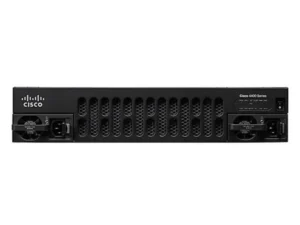
1. Place the router
How to set up a Cisco router? This step you need to follow. Pay attention to the documentation included with your router’s unpacking. Pay attention to any slips or stickers of paper that could contain important setup information, such as the Cisco router default password and username.
You will need to install antennas if they are not part of the main router unit. These antennas can be attached to the connectors at the back or sides. In some cases, antennas are already built into the router and only need to be extended or positioned.
After the router is assembled, you must locate a location to mount it. It is best to place the Cisco home router in a central area, not at one end of your home. Routers should be placed in the middle of the house To get the best signal strength and coverage. Higher positions, such as on a shelf, are preferred because radio waves travel out as they propagate through your house. Avoid potential interference from bricks, concrete walls, and metal objects.
A Cisco small business router should be placed in an open area. This will ensure that you have consistent coverage. It can be challenging to find an open space because the router must be connected to the broadband gateway provided by your ISP. This is typically attached to a cable that is near an exterior wall.
2. Connect to power
After the Cisco router is turned on, you will see its indicator lights turn on. Some lights will blink or change colors during setup, which indicates certain functions and changes. However, there should be one that shows when your router is correctly plugged into and turned on. It may take some time for the router to turn on after you have plugged it in.
3. Connect to the Internet
Next, connect your Cisco router to your internet. This could be a DSL, cable, or other ISP gateway. You will need a basic Ethernet cable to connect your router to the internet port or WAN. The port is often distinguished with a different colored cable or separated physically with a space.
As you connect the cable, be sure to check the LED indicators on the router. If the light changes color or there is a new light, it means an active internet connection has been established. Double-check your connection if there’s no confirmation indicator light. Ensure you are plugged into the correct port and that the Ethernet cable works correctly.
You will need to verify that the Cisco router is connected by connecting your laptop to one of the ports at the back. Quickly opening a wired network should be possible, as you did when verifying an active internet connection.
4. Configure the Cisco wireless router gateway
ISPs may offer gateways that have built-in routers to customers in some cases. These devices are generally not designed for business environments and don’t have additional ports, security, or other options that can be used to expand and add services as your business grows. If your gateway has an integrated router, you will need to configure it to disable the router. You’ll also need to pass the WAN IP address and all network traffic through the gateway. You may encounter conflicts that could prevent your devices from functioning properly if you don’t follow this step. This step may require you to contact your ISP.
5. Connect gateway to router
Turn off the gateway first. If an Ethernet cable is already plugged into the gateway’s LAN port then unplug it and connect it to your Cisco router’s WAN port. Wait for the gateway to turn on again and then wait for it to start up. Turn on the Cisco router by plugging in its power supply. Wait a few more minutes.
6. Access the router’s website interface
If the router manufacturer has provided one, it is easiest to continue router setup using a mobile app. You can connect the router via Ethernet cable to another computer if there isn’t an app or you prefer the web-based dashboard. The Cisco router’s IP address might be printed on the device’s back. If not, enter 192.168.1.1 into the browser search box.
7. Log in to the router and change your password
Log in to the Cisco router. The router’s home page will prompt for a username and password. Both are provided in the router’s documentation. It would be best if you changed the Cisco router’s password for security reasons.
8. Update the firmware of your router
The firmware or software that runs your routers may need to be updated. Updating it as soon as possible is essential, as new firmware may fix bugs or provide security protections. While some routers will automatically download the latest firmware, others may not. Updates may be checked through the browser or app.
9. Set up a Wi-Fi password
Pre-set Wi-Fi usernames are done on most routers. You will most likely be prompted to change your Wi-Fi password and username. However, if this prompt is not displayed, it is a good idea to act quickly.
10. Configure network security
To protect your network from hackers, you can add additional security features to your network. Many router manufacturers offer security features to preserve network and user privacy. To protect yourself against malicious traffic, you can log into the web dashboard to enable additional security features like firewalls, web filtering, and access controls. For privacy, you can also create virtual private networks.
Conclusion:
How to set up a Cisco router? These are some basic steps you must follow when configuring your Cisco small business router. We hope this can help you. As an official authorized supplier of Cisco routers, we can provide you with Cisco 2900 router, Cisco 1900 router, Cisco 3900 router, Cisco 1000 router, Cisco 1100 router, Cisco 4331 router, Cisco ISR 4000 router, and other series. If you have any needs, feel free to contact us.


